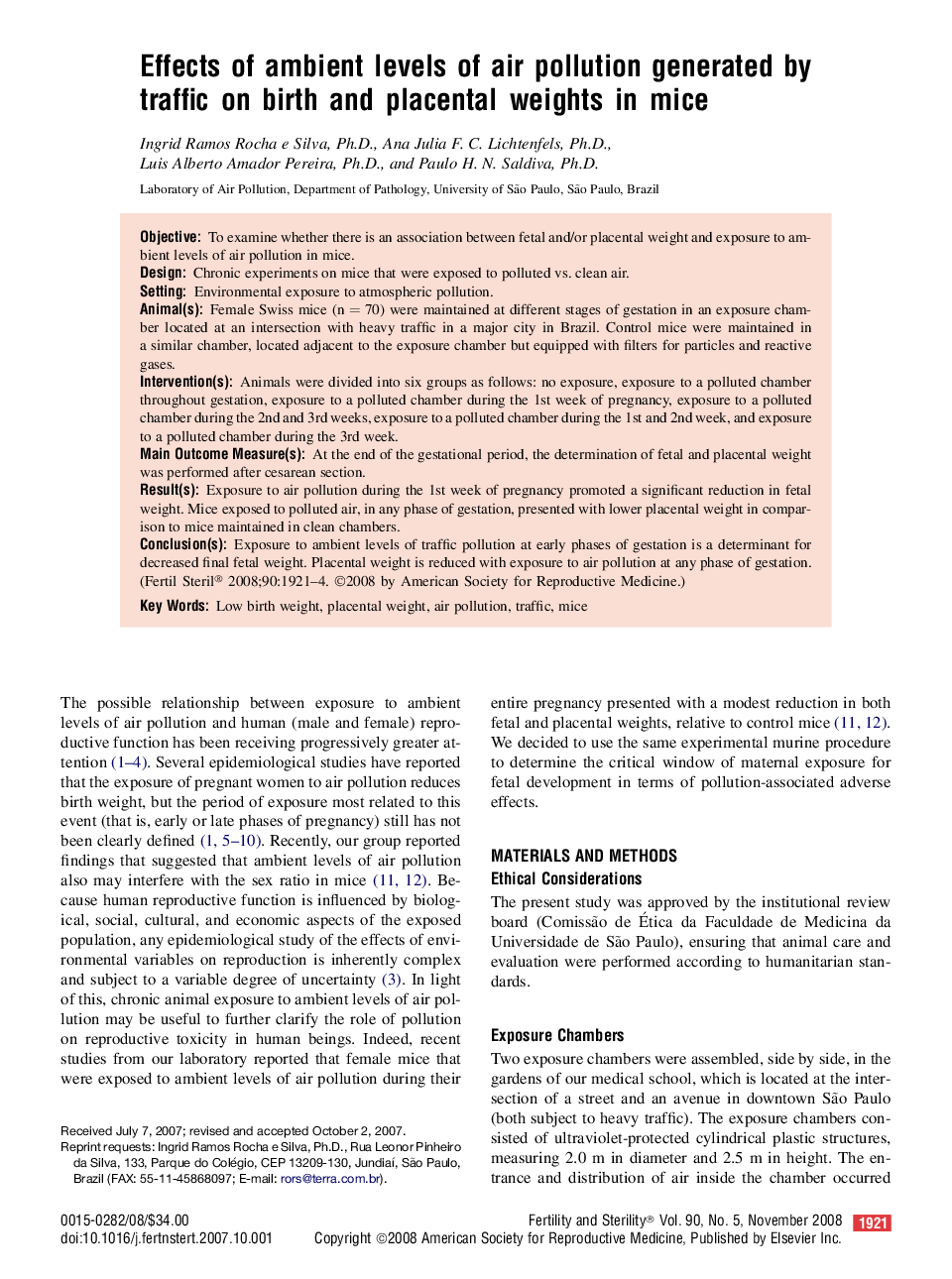| Article ID | Journal | Published Year | Pages | File Type |
|---|---|---|---|---|
| 3941643 | Fertility and Sterility | 2008 | 4 Pages |
ObjectiveTo examine whether there is an association between fetal and/or placental weight and exposure to ambient levels of air pollution in mice.DesignChronic experiments on mice that were exposed to polluted vs. clean air.SettingEnvironmental exposure to atmospheric pollution.Animal(s)Female Swiss mice (n = 70) were maintained at different stages of gestation in an exposure chamber located at an intersection with heavy traffic in a major city in Brazil. Control mice were maintained in a similar chamber, located adjacent to the exposure chamber but equipped with filters for particles and reactive gases.Intervention(s)Animals were divided into six groups as follows: no exposure, exposure to a polluted chamber throughout gestation, exposure to a polluted chamber during the 1st week of pregnancy, exposure to a polluted chamber during the 2nd and 3rd weeks, exposure to a polluted chamber during the 1st and 2nd week, and exposure to a polluted chamber during the 3rd week.Main Outcome Measure(s)At the end of the gestational period, the determination of fetal and placental weight was performed after cesarean section.Result(s)Exposure to air pollution during the 1st week of pregnancy promoted a significant reduction in fetal weight. Mice exposed to polluted air, in any phase of gestation, presented with lower placental weight in comparison to mice maintained in clean chambers.Conclusion(s)Exposure to ambient levels of traffic pollution at early phases of gestation is a determinant for decreased final fetal weight. Placental weight is reduced with exposure to air pollution at any phase of gestation.
